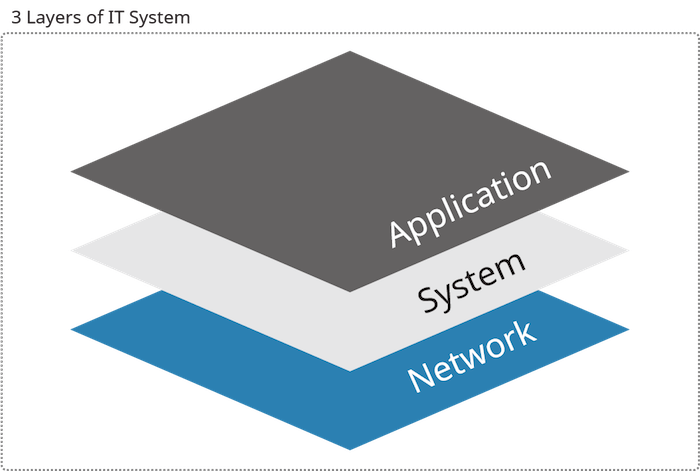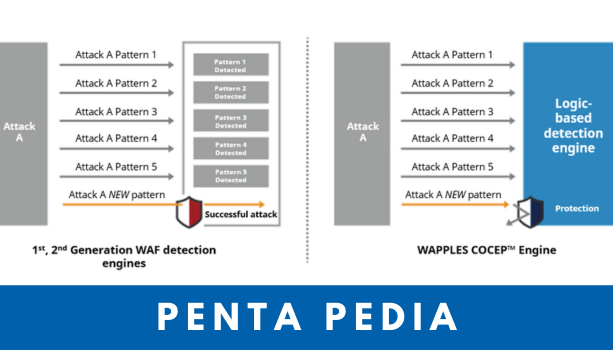[Penta Pedia] Firewall vs Web Application Firewall (WAF): What’s the Difference?
When it comes to cybersecurity, not all firewalls are created equal. A traditional firewall protects general network traffic, while a web application firewall (WAF) is a specialized solution designed specifically to secure web applications from targeted cyber threats. For enterprises aiming to build strong digital defenses, understanding the difference is key to implementing effective layered security.
Firewall
A firewall is a fundamental component in any network security architecture. Its main role is to block unauthorized access by filtering incoming and outgoing traffic based on pre-defined rules. It acts as a checkpoint between external networks (like the internet) and internal private networks, allowing only trusted users to pass.

Key Functions of a Firewall:
- Access Control: Filters traffic using sender/receiver IP addresses, protocols, and port numbers.
- User Authentication: Validates user identity for traffic permissions.
- Auditing & Logging: Records connection details and user activities for future analysis.
- Proxy Functionality: Replaces internal IP addresses to mask real IPs from external exposure.
- Network Address Translation (NAT): Converts private internal IPs to public ones, and vice versa.
Initially, most firewalls used simple packet filtering techniques. Over time, they evolved into application-aware proxy firewalls and began incorporating web firewall capabilities. But as hacking tactics grew more sophisticated, firewalls needed to evolve as well. Modern cybersecurity strategies now integrate intrusion detection systems (IDS), real-time analytics, and behavior monitoring, transforming firewalls into just one layer of a comprehensive security posture.
Web Application Firewall (WAF)
A Web Application Firewall (WAF) is designed to monitor, filter, and block HTTP traffic to and from a web application. It is a critical part of protecting against widespread and increasingly complex cyberattacks targeting websites, APIs, and cloud environments.
With the shift to cloud-based infrastructure, traditional WAFs have expanded their scope. Today’s web application security solutions often integrate API security, DDoS mitigation, and bot management under a broader category known as WAAP (Web Application and API Protection).
Key functions of WAAP:
- Bot and Malicious Traffic Protection: Distinguishes and isolates harmful bots or suspicious traffic while allowing legitimate users uninterrupted access.
- DDoS Attack Mitigation: Defends against one of the most common threats to applications by filtering malicious traffic at the application layer.
- API & Microservices Security: Delivers tailored protection using data-aware, context-sensitive policies that fit each component’s unique security needs.
- Account Takeover (ATO) Prevention: Detects unauthorized access attempts by leveraging authentication APIs and customer-facing authentication layers.
As enterprises increasingly rely on APIs to deliver services, WAAP solutions have emerged as essential in the modern cybersecurity toolkit. They provide the visibility and intelligence needed to defend digital assets from emerging attack vectors.
Penta Security’s WAAPLES: Next-Gen Web Security
WAPPLES, the Web Application and API Protection solution from Penta Security, is a next-generation security platform tailored to today’s evolving threat landscape. With the recent release of version 6.0.8, WAPPLES now offers advanced protection capabilities beyond standard WAF features—including API security, bot mitigation, and robust DDoS defense.

By focusing on securing APIs—the core of digital transformation—WAPPLES positions itself as a leading solution in the web security market. As a top global cybersecurity company, Penta Security continues to deliver safe, agile, and reliable protection for businesses worldwide. In an era where cyber threats are growing in both complexity and frequency, WAPPLES stands as a trusted shield for your most critical data assets.
☑️ Read more about Web Application Firewall (WAF)
☑️ Learn more about WAPPLES
* Would you like to learn more about Penta Security?
